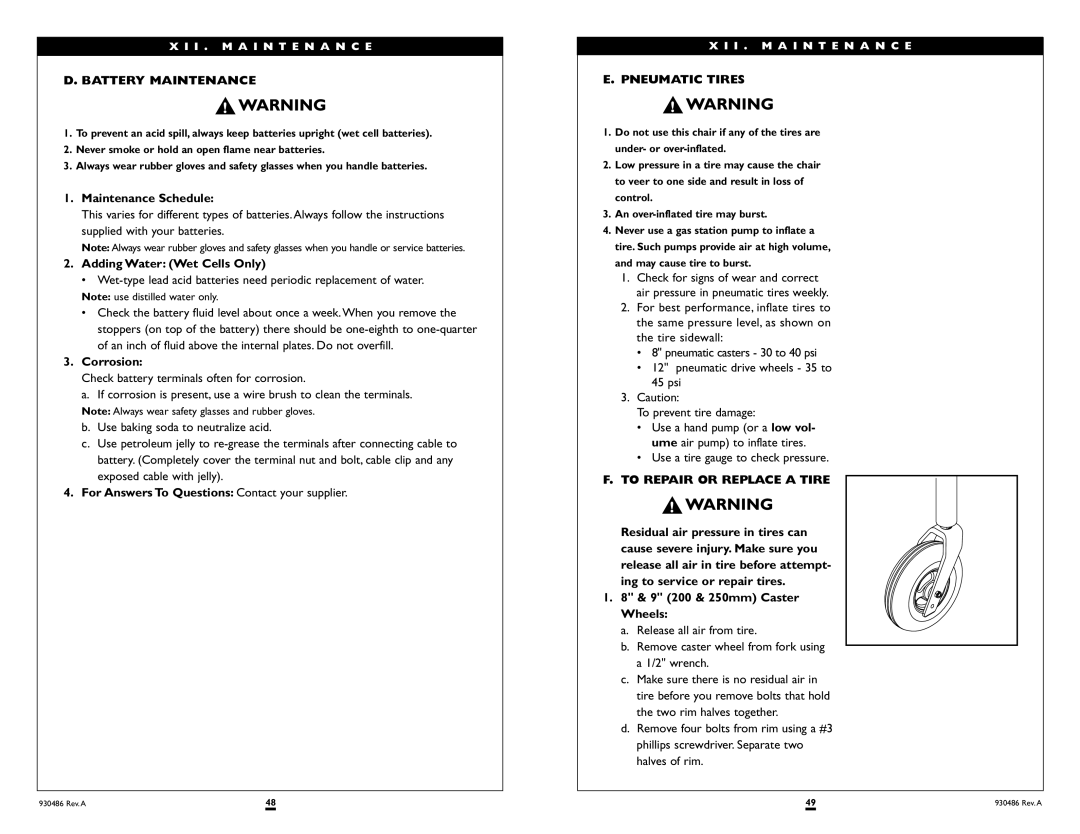
X I I . M A I N T E N A N C E
D. BATTERY MAINTENANCE
1.To prevent an acid spill, always keep batteries upright (wet cell batteries).
2.Never smoke or hold an open flame near batteries.
3.Always wear rubber gloves and safety glasses when you handle batteries.
1.Maintenance Schedule:
This varies for different types of batteries. Always follow the instructions supplied with your batteries.
Note: Always wear rubber gloves and safety glasses when you handle or service batteries.
2.Adding Water: (Wet Cells Only)
•
Note: use distilled water only.
•Check the battery fluid level about once a week.When you remove the stoppers (on top of the battery) there should be
3.Corrosion:
Check battery terminals often for corrosion.
a. If corrosion is present, use a wire brush to clean the terminals.
Note: Always wear safety glasses and rubber gloves. b. Use baking soda to neutralize acid.
c. Use petroleum jelly to
4.For Answers To Questions: Contact your supplier.
X I I . M A I N T E N A N C E
E. PNEUMATIC TIRES
1.Do not use this chair if any of the tires are under- or
2.Low pressure in a tire may cause the chair to veer to one side and result in loss of control.
3.An
4.Never use a gas station pump to inflate a tire. Such pumps provide air at high volume, and may cause tire to burst.
1.Check for signs of wear and correct air pressure in pneumatic tires weekly.
2.For best performance, inflate tires to the same pressure level, as shown on the tire sidewall:
•8" pneumatic casters - 30 to 40 psi
•12" pneumatic drive wheels - 35 to 45 psi
3.Caution:
To prevent tire damage:
•Use a hand pump (or a low vol- ume air pump) to inflate tires.
•Use a tire gauge to check pressure.
F.TO REPAIR OR REPLACE A TIRE
Residual air pressure in tires can
cause severe injury. Make sure you release all air in tire before attempt- ing to service or repair tires.
1. 8" & 9" (200 & 250mm) Caster Wheels:
a.Release all air from tire.
b.Remove caster wheel from fork using a 1/2" wrench.
c.Make sure there is no residual air in tire before you remove bolts that hold the two rim halves together.
d.Remove four bolts from rim using a #3 phillips screwdriver. Separate two halves of rim.
930486 Rev. A | 48 | 49 | 930486 Rev. A |
